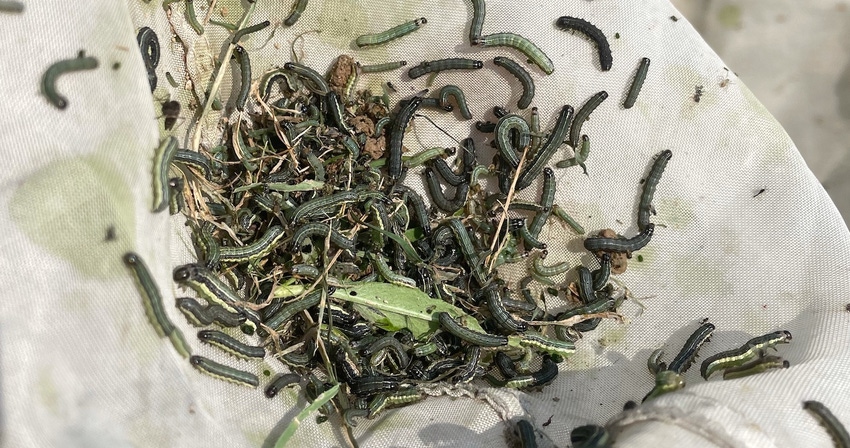
So much for that February cold snap knocking the insects back. I guess that was just wishful thinking. Instead, it seems 2021 has seen higher than average insect pressure, at least for some areas of the Midsouth.
Top of mind for most is 2021’s fall armyworm situation (or as my friend and entomologist, Scott Stewart called it, “Armywormgeddon”). During the last week of July, my Twitter feed was flooded with photos of sweep nets overloaded with armyworms. Unusually early moth flights, combined with unusually poor control with pyrethroid insecticides created infestations of epic proportions.
As I write this, two distinct rounds of fall armyworms have already invaded Mid-south rice and double-cropped soybean fields, as well as bermudagrass pastures. And some experts fear a third round is looming.
Armyworms were not the only crop pest found in excess this year. Tarnished plant bugs have been a nightmare. In Arkansas, some farmers reported plant bug populations at eight times threshold. In Tennessee, where cotton growers typically only spray two to three times for plant bugs in a season, many have been forced to make up to six applications in 2021. Our readers in Mississippi may be rolling their eyes at this. I saw social media posts where growers there were making four plant bug applications in a week.
Our cool wet spring made conditions ripe for thrips and slugs. We’ve seen localized hot spots for other pests, including salt marsh caterpillars and green stink bugs.
The buzz on insects has not been limited to our region. This was the year for the emergence of billions of Brood X cicadas, after all. Their shrill, deafening buzz was the sound of summer in the Eastern U.S. In the West, grasshopper swarms have plagued wheat and pastures.
In the northeast, the spotted lanternfly is causing alarm. The invasive pest poses a serious threat to the region’s fruit crops and ornamental industry. Residents are being urged to kill any lanternfly they see. “Squash the bug” is not just something you hear at t-ball games — it’s a public service announcement.
A nest of nearly 1,500 Asian Giant “Murder Hornets” was eradicated in Washington this August. I guess that’s good news, although you wonder how many other mega-nests are out there.
In my own backyard, the fire ants have been worse than ever. It’s as if they have a symbiotic relationship with the armyworms. It’s hard to tell where the brown patches of bermudagrass end and the fire ant mounds begin.
Ticks have been bad, too, and mosquitoes have been fierce. Worse than ever? It’s hard to say. It certainly feels that way when you’re itching for relief from the latest bite.
I realize our world would grind to a halt without insects, but this summer has made me yearn for a long, cold winter.
Not that it will do any good.
About the Author(s)
You May Also Like






